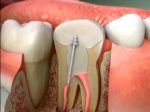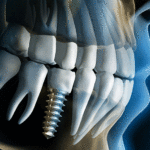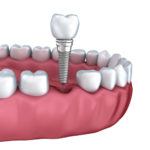Table of Contents
Root Canal Treatment
A root canal treatment can be a very tough decision for a patient because they’re terrified of it. Usually, such patients tend to get their teeth extracted rather than to save it. We don’t blame them, if a root canal goes wrong you can have pain in your teeth that you have never felt before.
What Is Endodontic/Root Canal Therapy
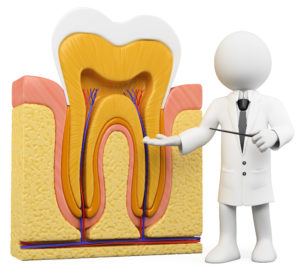
Root canal procedures are generally very complicated. Most root canal treatments require one visit while as others require two or even more visits. The visits vary on the type of tooth being treated, how many canals it has and most importantly what kind of an infection is your dentist dealing with.
Root canal treatment is basically the removal of the infected or dead nerve and blood vessels of the tooth. The removal is followed by a series of steps that cleans the entire root system of a tooth. Endodontic therapy is generally advised when the blood vessels or nerves of the tooth get infected due to cavity, trauma or periodontal disease.
The treatment involves three steps:
- Shaping of the root,
- Decontamination of the root,
- Obturation (filling of the root canal).
Shaping and decontamination. This is done by files. Files are instruments that resemble a pin that has protruded edges. Either they are made of nickel titanium or stainless steel.
Obturation. Obturation or filling of the root canal is carried out by Gutta-percha and an endodontic sealer.
Diagnosis and Preparation
Patients usually feel incredible amount of sensitivity while consuming hot and cold beverages or food that warrants your dentist to go for a root canal. However, in some cases, there may be a severe amount of infectious material present underneath the root that can cause you pain when eating, and hence a root canal is recommended.
Technique For Instrumentation
 Before any instrumentation, your dentist will use anesthesia to completely numb the tooth. As a practicing dentist, I believe this is most important step for a painless root canal. Short comings in the anesthesia is the number one reason why a patient feels pain during a root therapy. After adequate anesthesia, your dentist will insert the files into the root system. This is followed by a clockwise and anticlockwise movement on H/K files where as in crown down technique I.e. using pro-tapers only a clockwise motion is followed.
Before any instrumentation, your dentist will use anesthesia to completely numb the tooth. As a practicing dentist, I believe this is most important step for a painless root canal. Short comings in the anesthesia is the number one reason why a patient feels pain during a root therapy. After adequate anesthesia, your dentist will insert the files into the root system. This is followed by a clockwise and anticlockwise movement on H/K files where as in crown down technique I.e. using pro-tapers only a clockwise motion is followed.
Procedure of Shaping
Most dentists use a step back technique in shaping of the canal. K/H files are used to determine the working length (The length of the root of the tooth). Eventually removal of the infected tissues is carried out by these files.
Some dentists prefer the crown down technique rather than the step back technique. This involves the preparation of the coronal part of the root (the top portion of the root) first and then subsequently the preparation of the apical region (Bottom part of the root). Necessary X-rays will be taken of the tooth to ensure proper shaping and debridement of the tooth.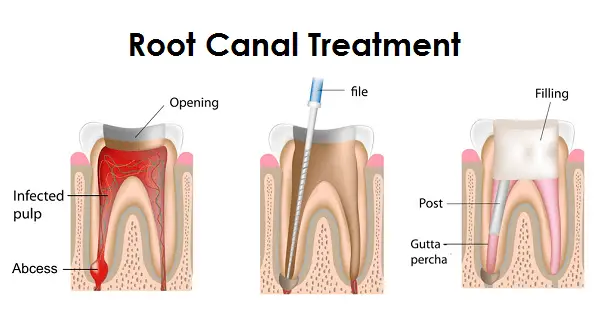 Regardless of whichever technique is used, your dentist must make sure that he/she uses copious irrigation to flush out all the infected pulp and bacteria.
Regardless of whichever technique is used, your dentist must make sure that he/she uses copious irrigation to flush out all the infected pulp and bacteria.
The most common irrigants used are:
- less than 5% sodium hypochlorite (NaOCl),
- 6% sodium hypochlorite with surface modifiers for better flow into nooks and crannies,
- 2% chlorhexidine gluconate,
- 0.2% chlorhexidine gluconate plus 0.2% cetrimide,
- 17% ethylenediaminetetraacetic acid (EDTA),
- Framycetin sulfate,
- Mixture of citric acid, doxycycline, and polysorbate 80 (detergent) (MTAD).
Filling of the Root Canal System
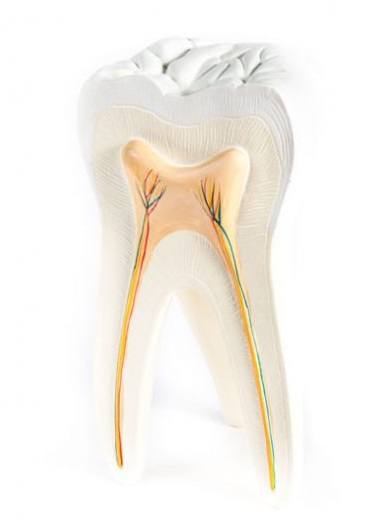 The filling material of a root canal system is Gutta Percha along with an endodontic sealer. The procedure involves filling of the root system with this material till the full working length.
The filling material of a root canal system is Gutta Percha along with an endodontic sealer. The procedure involves filling of the root system with this material till the full working length.
At most instances your dentist won’t immediately fill up the root system. The reasons are:
- If there is pus present at the root end
- Persistent pain even after complete cleaning of the canals.
Your dentist may place calcium hydroxide in the root system, this is also referred to as a temporary filling. Furthermore, due to calcium hydroxide’s basic property it is a very efficient antibacterial agent.
Temporary Filling
Following each visit at your dentist for a root canal treatment, your dentist will usually place an interim/temporary filling between visits. This is because, if a tooth is left open i.e. without any filling material the tooth may become infected due to accumulation of food.
Being said that, at some instances, your tooth maybe left open for a period of 24 hours. This ensures removal of all the pus and necrotic debris inside the root system.
Final Filling
Following the completion of a root canal treatment, your dentist may fill up the tooth with composite or GIC. Both of these filling materials are referred to as permanent restorations.
Final Restoration
Regardless of whichever filling materials is used by your dentist, a dental crown become an absolute necessity after it. Following a root canal treatment, all the blood vessels, the nerves are removed, this makes the tooth more brittle, which makes it easy for it to break if a crown or bridge is not placed.
Even if you don’t get a crown and are extremely careful with a root treated tooth, a certain discoloration of the treated tooth begins. The exact cause of this discoloration is not yet known.
 Follow Up
Follow Up
Usually your dentist will ask you to come for a follow up visit after 2 months of a root canal therapy. In this follow up call your dentist will check if there’s adequate bone healing near the root end.
Alternatives to a Root Canal Treatment
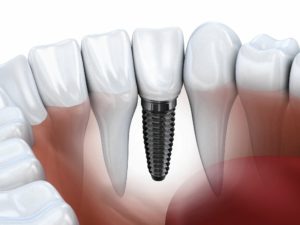 There are some patients who would prefer an implant placement rather than a root canal therapy. Again, the reason being because of horrible past experiences with their dentist. Implant placement involves the removal of the infected tooth which is followed by placement of an implant or in other words a screw. This procedure is also referred to as immediate loading.
There are some patients who would prefer an implant placement rather than a root canal therapy. Again, the reason being because of horrible past experiences with their dentist. Implant placement involves the removal of the infected tooth which is followed by placement of an implant or in other words a screw. This procedure is also referred to as immediate loading.
Implant therapy is much easier than a root canal therapy if a dental surgeon knows his way around the bone and teeth. Furthermore, implants have shown a high success rate. Implant placement requires one visit to a dentist. However, in order for a prosthesis/a tooth to be placed on the implant, the patient has to wait for 3-5 months. During this period, the implant will join with the bone, a process called osseointegration.
According to most patients, there is relatively no pain involved during the placement of an implant which is the reason why they prefer implants over root canal treatment.
Regardless of whichever treatment you or your dentist choses for you, be it implant therapy or a root canal treatment, it’s the duty of the dentist to give you a pain free treatment.
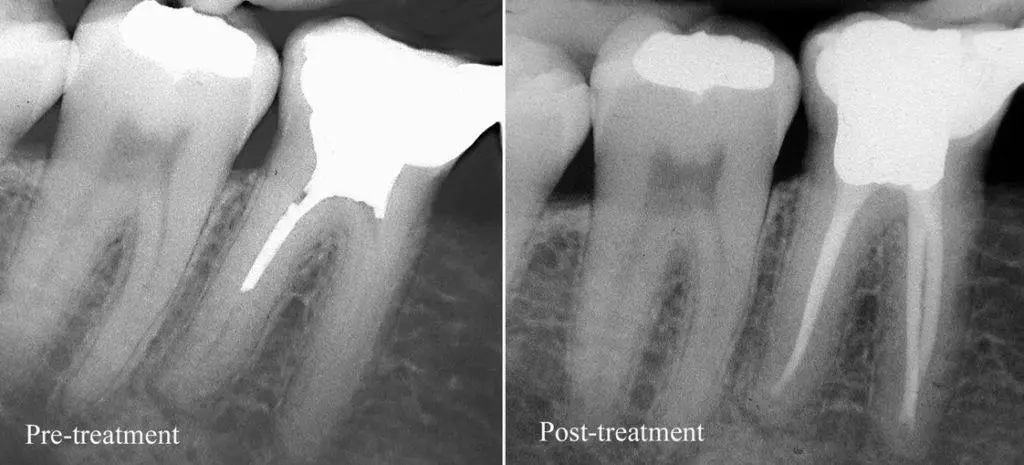 Follow Up
Follow Up